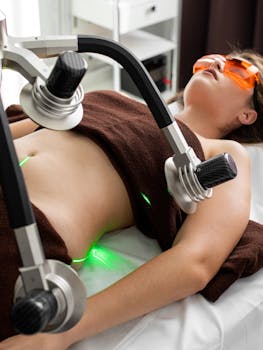Finding a small, unusual bump after breast surgery can be alarming. Finding a pea sized lump breast implants can cause anxiety for patients, but not every lump signals a serious problem. This article explains common causes, what tests your surgeon may order, treatment options, and realistic expectations for outcomes so you can make informed choices with your care team.
Pea-sized lump and breast implants: common causes
Small lumps felt near an implant may be caused by several benign issues. A scar tissue lump after breast augmentation is one of the most frequent explanations — the body naturally forms a fibrous capsule around an implant and occasionally that tissue becomes thickened or firm. Other causes include localized inflammation, fat necrosis (damage to fatty tissue after surgery), suture knots, small hematomas or seromas, and rarely implant rupture or infection.
How clinicians evaluate a small lump
Evaluation starts with history and physical exam: when the lump appeared, whether it is painful, and any changes over time. Imaging is commonly used to clarify the cause. Ultrasound is quick and effective for distinguishing solid versus fluid-filled masses, and MRI provides detailed views of implant integrity and surrounding tissue when needed. Your surgeon or breast specialist may also recommend observation if the lump is stable and non-tender.
Scar tissue and capsular contracture
When scar tissue tightens around an implant it’s called capsular contracture, and it can feel like a firm or pea-sized lump in early stages. Severity varies from mild firmness to significant distortion and pain. For background on how scar tissue can affect implants and when surgical revision is considered, reputable resources explain capsular contracture in more detail: https://en.wikipedia.org/wiki/Capsular_contracture. Mild cases may be managed conservatively, while moderate to severe contracture often requires surgical treatment.
Pros and cons of monitoring versus intervention
Small, stable lumps without pain or growth are often observed, which avoids unnecessary surgery and its risks. The pros of watchful waiting include avoiding anesthesia, preserving existing implants, and tracking changes over time. The cons are potential anxiety and the chance that a lesion may change—necessitating later intervention. When a lump causes discomfort, rapid growth, or raises imaging concerns, revision surgery, capsulectomy, implant exchange, or targeted treatments may be recommended.
Treatment options and expected results
Treatment depends on cause. For a scar tissue lump after breast augmentation that is symptomatic, options include medication (anti-inflammatories), massage or physical therapy, closed capsulotomy in rare cases, or surgical capsulectomy and implant replacement. Infection requires antibiotics and possible implant removal. Fat necrosis may resolve or be excised if symptomatic. After revision surgery, healing and final contour can take months; some patients experience immediate relief of firmness and improved shape, while others require staged procedures.
What to ask your surgeon
Bring clear questions to your appointment: How certain are you of the diagnosis? What imaging do you recommend and why? What are the benefits and risks of observation versus surgery? If surgery is advised, what is the expected recovery timeline and complication rate? If you’re facing revision and want a sense of recovery expectations after facial or other aesthetic procedures, you can also review timelines for different cosmetic recoveries like this descriptive anchor text to understand typical healing phases.
When to seek urgent care
Seek prompt medical attention if the lump is accompanied by fever, increasing redness, rapid swelling, severe pain, drainage, or systemic symptoms. Those signs can indicate infection or an acute complication that needs timely treatment. Otherwise, schedule an appointment to have the lump evaluated within a reasonable timeframe rather than waiting for it to resolve on its own.
- Takeaways: Small lumps near implants are common and often benign.
- Takeaways: Scar tissue (capsular contracture) is a frequent cause and has specific treatment pathways.
- Takeaways: Imaging—usually ultrasound or MRI—helps differentiate causes.
- Takeaways: Observation is appropriate for stable, painless lumps; surgery is for symptomatic or suspicious changes.
Q: Could a pea-sized lump indicate cancer?
A pea-sized lump after breast augmentation is more commonly scar tissue, fat necrosis, or implant-related change than cancer. However, any new breast lump should be evaluated by a clinician and imaged as appropriate to rule out malignancy, especially if it is firm, irregular, or associated with other concerning signs.
Q: Will a scar tissue lump go away without surgery?
Mild scar tissue may soften with time, massage, or conservative measures, but established capsular contracture often persists and can require surgical correction for durable improvement. Your surgeon can advise whether a trial of nonoperative care is reasonable based on exam and imaging.






